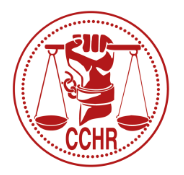Forty or so years ago, it would be safe to say no kids were on any psychiatric drugs. ADHD and bipolar disorder in kids was unheard of and most other children’s mental illness labels were nonexistent. Depending on your source, six to seven million children are now on psychiatric drugs. Ten percent of ten year old boys are on drugs to treat ADHD and half a million children are on antipsychotics. How is it that mental illness in children used to be nonexistent and now it has become widespread like the plague?
Since there are no objective tests, blood tests or any kind of test to scientifically and medically prove that mental disorders even exist, then one can conclude that the “expertise” of mental health practitioners is subjective and only based on opinion. Psychiatric opinion has no boundaries or limitations so they can alter the line between normal and abnormal behavior thus making it completely obscure. One can observe that as psychiatric opinions change so do mental disorders.
In the eighties and nineties, diagnoses and treatment of ADHD became prevalent. Then two very influential psychiatrists from a prestigious hospital suggested that children had bipolar disorder all along, not ADHD. They thought the mania exhibited in adults might be shown in children as irritability and could be diagnosed as early as infancy. As a result, the number of children diagnosed with juvenile bipolar disorder increased forty times over an eleven year period!
Over time a backlash ensued and the upcoming DSM-V, (fifth edition of the Diagnostic and Statistical Manual) is considering replacing the bipolar , with a new one called TDD, Temper Disregulation Disorder with Dysphoria. Without any scientific proof that any disorder exists, opinions change instead to suit subjectivity and reputation. Indeed the perfect example of this is that homosexuality used to be considered a mental illness until public pressure resulted in it being removed from the DSM.
Medical doctors don’t have such liberties. Their opinions are limited by the facts given in test results. An x-ray shows a broken bone or tumor. A blood test shows an infection because of a high white blood cell count. Such definitive diagnoses are nowhere to be seen in mental disorders. Without medical evidence, psychiatrists are free to create new disorders as they please which would explain the increasing number of disorders over the years in each subsequent edition of the DSM.
Maybe all this wouldn’t be so bad if these unsubstantiated opinions and diagnoses were harmless. However, when you are treating all these conditions with mind-altering drugs, there is plenty to be concerned about. Not only is there multiple adverse side effects, these drugs are also being prescribed “off label.” That means they are being prescribed for something other than what the FDA approved it for.
The FDA approves drugs for specific use and drug companies cannot market them for anything other than that specific use. However, doctors can prescribe whatever they see fit, so drug companies target the doctors and persuade them to push their drugs instead. As a result, a child could get a prescription for drugs not approved for children and/or not approved for treatment of the diagnosis. This provides an open door for a potent mind-altering cocktail to be given to a child with no evidence of it being safe or effective.
Even if a drug is FDA approved, it doesn’t offer much assurance regarding safety. A drug company only needs two positive trials to be presented to the FDA to get a drug approved. They can run multiple trials with negative results, but as soon as two positive ones have been done they have hit pay dirt and the rest can be tossed. It is shocking that two positive trials are allowed to represent safety and effectiveness when the truth is that multiple negative trials are not legally required to be disclosed.
In forty-two trials of the six most commonly used antidepressants, a placebo was eighty-two percent as effective as the drugs. This makes the side effects of violence and suicide of utmost concern and raises the question why are these drugs on the market? Most of the forty-two trials were negative and swept under the rug, but the few positive studies were widely promoted to make the public think they are safe and effective.
This web that psychiatry has spun has nothing safe or effective in it. The diagnoses are subjective and lack scientific validity. Disorders can be changed, deleted, redefined or renamed without anyone to tell them otherwise. The side effects are very serious and concern one’s long-term health. Pharmaceutical influence is driven by profit not cures. The government agency that is supposed to be the watchdog is instead looking the other way.
Where is the good in all this and what happened to that medical dictum “first, do no harm?” Medical ethics dictate that it may be better to do nothing rather than risk doing more harm than good. You would think this principle would make a doctor or psychiatrist think twice before deciding on treatment of his patients. It is clear that this idea is not currently being applied and has been abandoned in the field of mental health.
References:
http://www.nybooks.com/articles/archives/2011/jun/23/epidemic-mental-illness-why/?page=1
http://www.nybooks.com/articles/archives/2011/jul/14/illusions-of-psychiatry/
http://en.wikipedia.org/wiki/Primum_non_nocere
Free Baker Act Help - Call Us: 800-782-2878
info@cchrflorida.org


0 Comments